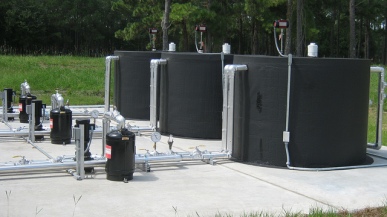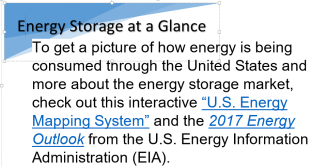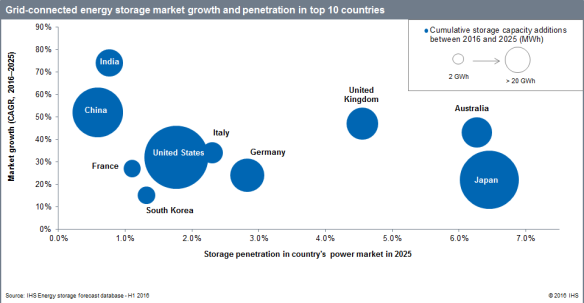by Prasanna Srinivasan, Manager, Business Development & Marketing at LORD Corporation

Prasanna Srinivasan
Energy storage is not a new concept. It has been around for decades and is touted as an important tool for facility managers to optimize their facility energy system, a solution to fixing the aging power grid and increasing the spread of renewable energy. It has been a valuable tool for reducing electric bills and helps during emergencies such as power outages from storms, equipment failures or accidents.
The energy storage market is positioned to “explode” to an annual installation size of 6 gigawatts (GW) in 2017 and more than 40 GW by 2022 from an initial base of 0.34 GW installed in 2012 and 2013. Analyzing energy storage from a monetary standpoint, it is expected to grow 8 percent a year to $50 billion in 2020.
The federal government has also committed to increasing energy storage and microgrid capacity, further promoting expansion of this market. In June 2016, the White House announced a series of federal and private-sector actions to scale energy storage in the U.S. at the Summit on Scaling Renewable Energy and Storage with Smart Markets.
These factors, among others, are contributing to this rapid market expansion.
- The growth of the electric vehicle (EV) market. The International Energy Agency says electric car stock reached 1.26 million in 2015, 100 times more than in 2010. New registrations of electric cars increased by 70 percent between 2014 and 2015, with more than 550,000 vehicles being sold worldwide in 2015. EVs could impact the energy storage market through vehicle-to-grid technologies, through which their batteries could be connected to the grid to discharge power for others to use.
-

Energy storage systems are expected to grow to an annual size of 6 gigawatts this year and to more than 40 gigawatts by 2022. Source: Flickr
The progress of Lithium-ion (Li-ion) battery technology. Li-ion batteries have ramped up in terms of energy and power density. Throughout the next decade, Li-ion batteries are expected to become the mainstream energy-storage technology, and more than 80 percent of global energy storage installations will include the technology by 2025.
- Abundance of untapped resources. Energy storage makes it possible to take advantage of solar energy, even when the sun isn’t out, and wind power when there isn’t wind. Energy storage systems are able to help smooth out the electricity supply from variable energy sources such as these.

- Push for cleaner energy and energy independence. The intense focus on this, along with some government subsidies, has propelled the market forward. Energy storage not only supports the integration of renewable energy generation, such as wind and solar power, but it helps cut emissions as it takes more of the load off fossil-fuel generation. Making existing generation go further and avoiding capital and resource-intensive new facilities would make a significant contribution to environmental priorities. California’s Santa Rita jail in Dublin, Calif. – the fifth-largest correctional facility in the United States – has embraced energy storage, developing its 113 acres into a modern microgrid. The jail is now able to meet its own power needs in case of a utility grid outage. This is a game-changer because the facility now has the ability to balance power supply and demand instantaneously – literally within milliseconds – making power networks much more resilient, efficient and cleaner than in the past.
- Big names have jumped on board with energy storage. Grid companies have started working with battery pack integrators to provide a smart grid, and solar companies are partnering with battery suppliers. The automotive industry has also readily adopted energy storage to help accelerate development of high-performance, cost-effective, and safe energy storage systems to power the next generation of electric-drive vehicles, cut greenhouse gas emissions and reduce the need for the U.S. to import oil.
 Although the energy storage market is rapidly expanding and provides numerous opportunities, there are still kinks that must be worked out before it can be fully adopted on a mainstream level.
Although the energy storage market is rapidly expanding and provides numerous opportunities, there are still kinks that must be worked out before it can be fully adopted on a mainstream level.
For more on challenges and limitations facing the energy storage market, look for an “Energy Storage: Part 2” follow-up to this blog post. In the meantime, let us know your thoughts on the future of energy storage.
To get a picture of how energy is being consumed through the United States and more about the energy storage market, check out this interactive “U.S. Energy Mapping System” and the 2017 Energy Outlook from the U.S. Energy Information Administration (EIA).

